1. Statue of Liberty, New York City

The Statue of Liberty, officially known as “Liberty Enlightening the World,” is a colossal neoclassical sculpture located on Liberty Island in New York Harbor, New York City. Designed by French sculptor Frédéric Auguste Bartholdi and built by Gustave Eiffel, the statue was a gift from France to the United States, marking the centennial of American independence.
Unveiled on October 28, 1886, the statue has since become one of the most recognizable symbols of freedom and democracy. Its towering presence, reaching 305 feet including its pedestal, represents the ideals of liberty, enlightenment, and the welcoming of immigrants to the United States.
The statue is crafted from copper and iron, giving it its distinctive green patina. It depicts a robed female figure holding a torch above her head in her right hand, symbolizing enlightenment and the guiding light of freedom. In her left hand, she holds a tablet inscribed with the date of the American Declaration of Independence, July 4, 1776. At her feet, broken chains lie, representing the end of oppression and tyranny.
Visitors to the Statue of Liberty can access the pedestal and, with advanced reservations, the crown, which offers panoramic views of New York Harbor and the Manhattan skyline. The view from the crown provides a breathtaking perspective of the city, encompassing landmarks such as the Brooklyn Bridge, the Empire State Building, and the sprawling urban landscape.
The statue is not only an architectural marvel but also a profound symbol of hope and opportunity. It was a beacon to countless immigrants arriving at Ellis Island in the early 20th century, symbolizing a new beginning and the promise of a better life in America. Its image has been a recurring symbol in various movements advocating for civil rights and social justice, reflecting its enduring relevance in the ongoing pursuit of freedom and equality.
Today, the Statue of Liberty remains a central landmark in American culture and history. It is visited by millions of people each year and continues to serve as a powerful reminder of the values of liberty and democracy, drawing both American citizens and international visitors to its shores. Its status as a UNESCO World Heritage Site further emphasizes its global significance as a monument to universal ideals.
2. Grand Canyon, Arizona
The Grand Canyon in Arizona is one of the most awe-inspiring natural wonders in the world, renowned for its immense size, breathtaking vistas, and unique geological formations. Carved by the Colorado River over millions of years, the Grand Canyon stretches approximately 277 miles in length, up to 18 miles in width, and reaches depths of over a mile.
This vast chasm showcases a dramatic display of geological history, with layers of rock that reveal nearly 2 billion years of Earth’s history. The stratified layers of the canyon exhibit a stunning array of colors, from deep reds and purples to vibrant oranges and browns, highlighting the different periods of sedimentary deposition. Each layer tells a story of ancient seas, deserts, and volcanic activity.
The Grand Canyon’s sheer scale and varied landscape create spectacular vistas from its numerous viewpoints, such as the South Rim, North Rim, and Desert View. The South Rim is the most accessible and popular, offering a range of viewing platforms and trails, including the famous Bright Angel Trail, which descends into the canyon. The North Rim, less frequented, provides a more secluded experience with equally breathtaking views.
The canyon’s geological formations include iconic landmarks like the imposing Vishnu Schist, the towering buttes and mesas, and the winding Colorado River that continues to shape the canyon’s landscape. The interplay of light and shadow across the canyon’s vast expanse creates ever-changing vistas, particularly at sunrise and sunset, when the canyon’s colors are most vibrant.
In addition to its geological significance, the Grand Canyon is a haven for outdoor enthusiasts. Activities such as hiking, rafting, and scenic helicopter tours offer different perspectives of this natural marvel. The Grand Canyon Village at the South Rim provides educational resources, including the Grand Canyon Railway and the historic El Tovar Hotel, which add to the visitor experience.
The Grand Canyon is also a cultural landmark, holding spiritual significance for Native American tribes such as the Havasupai, Hopi, and Navajo. These tribes have long considered the canyon a sacred place, and their cultural traditions and stories are deeply interwoven with the landscape.
Designated as a UNESCO World Heritage Site, the Grand Canyon’s status reflects its global significance as a natural wonder. Its immense beauty and geological complexity make it a compelling destination for travelers from around the world, offering an unparalleled opportunity to witness one of nature’s most magnificent creations.
3. Mount Rushmore, South Dakota
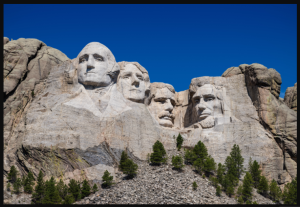
Mount Rushmore, located in the Black Hills of South Dakota, is renowned for its monumental sculpture featuring the faces of four prominent U.S. presidents. Carved into the granite face of the mountain, the sculpture is one of the most iconic and recognizable landmarks in the United States.
The Mount Rushmore National Memorial was designed by sculptor Gutzon Borglum and his son Lincoln Borglum. The project began in 1927 and was completed in 1941, though the design was left unfinished due to budget constraints and the onset of World War II. The colossal sculpture features the heads of four presidents:
- George Washington – The first President of the United States, representing the birth of the nation.
- Thomas Jefferson – The third President, who drafted the Declaration of Independence, symbolizing the expansion of the nation.
- Theodore Roosevelt – The 26th President, noted for his role in the development of national parks and his leadership in the construction of the Panama Canal.
- Abraham Lincoln – The 16th President, known for his leadership during the Civil War and his efforts to preserve the Union and end slavery.
Each face on Mount Rushmore is about 60 feet tall, with features that were meticulously carved to reflect the likenesses of these historical figures. The choice of these four presidents was intended to represent the nation’s founding, growth, and preservation.
The monument is situated in the Black Hills, a region of great natural beauty and historical significance. The surrounding area offers various activities, including hiking, scenic drives, and educational exhibits. The Sculptor’s Studio, located near the base of the monument, provides insight into the artistic and technical challenges of the carving process.
Mount Rushmore is not only a symbol of American heritage but also a popular tourist destination, attracting millions of visitors each year. The site features an observation plaza where visitors can view the monument up close, along with a visitor center that provides historical context and information about the presidents depicted.
The monument’s location and scale make it a striking visual landmark, with the granite faces of the presidents standing out against the backdrop of the surrounding hills. The lighting of the monument at night adds a dramatic effect, allowing for evening viewings and enhancing the site’s grandeur.
Mount Rushmore’s significance extends beyond its artistic and historical value; it represents the ideals and achievements of the nation’s leadership and serves as a tribute to American democracy and history.
4. Golden Gate Bridge, San Francisco
The Golden Gate Bridge, spanning the Golden Gate Strait between San Francisco and Marin County in California, is one of the most iconic and celebrated engineering feats in the world. Completed in 1937, the bridge is renowned for its striking Art Deco design, vibrant International Orange color, and stunning views, making it a symbol of San Francisco and California.
Engineering Marvel
The Golden Gate Bridge was an extraordinary achievement in engineering, especially given the technological limitations of the time. Designed by engineer Joseph Strauss and architect Irving Morrow, the bridge was the longest and tallest suspension bridge in the world at the time of its completion. Stretching approximately 1.7 miles in length and with a main span of 1,280 feet, it gracefully spans the Golden Gate Strait, connecting San Francisco to Marin County.
The bridge’s towers rise 746 feet above the water, making them taller than the Washington Monument. The construction required innovative techniques to withstand the strong ocean currents, high winds, and seismic activity typical of the region. The bridge’s design, including its suspension cables and towers, not only provided structural integrity but also contributed to its aesthetic appeal.
Iconic Design and Color
The Golden Gate Bridge’s distinctive International Orange color was chosen not only for its visibility in foggy conditions but also for its striking contrast with the natural surroundings. The color enhances the bridge’s visibility while blending harmoniously with the natural landscape and the often foggy conditions of the San Francisco Bay Area. Its sleek Art Deco design features clean lines and elegant curves, contributing to its status as an architectural masterpiece.
Stunning Views and Cultural Significance
The Golden Gate Bridge offers breathtaking views from various vantage points, including its own viewpoints and nearby locations such as Fort Point, Crissy Field, and the Marin Headlands. The bridge’s sweeping curves and vibrant color create a dramatic visual impact against the backdrop of the bay, the Pacific Ocean, and the rugged coastal landscape.
The bridge has become an enduring symbol of California and American ingenuity. It has been featured in countless films, photographs, and artworks, solidifying its place in popular culture. Its construction was a testament to human determination and innovation, overcoming numerous challenges to become a celebrated landmark.
Visitor Experience
Visitors can experience the Golden Gate Bridge through several means. Walking or biking across the bridge provides an up-close view of its architecture and panoramic views of the bay and the city. The Golden Gate Bridge Welcome Center offers exhibits and information about the bridge’s history and engineering. Additionally, guided tours and educational programs provide deeper insights into the bridge’s significance and construction.
The Golden Gate Bridge remains a vital transportation link, a beloved landmark, and a source of pride for the San Francisco Bay Area. Its combination of engineering prowess, aesthetic appeal, and cultural impact continues to captivate and inspire visitors from around the world.
5. White House, Washington, D.C.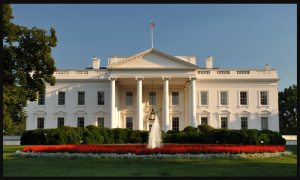
The Golden Gate Bridge, spanning the Golden Gate Strait between San Francisco and Marin County in California, is one of the most iconic and celebrated engineering feats in the world. Completed in 1937, the bridge is renowned for its striking Art Deco design, vibrant International Orange color, and stunning views, making it a symbol of San Francisco and California.
Engineering Marvel
The Golden Gate Bridge was an extraordinary achievement in engineering, especially given the technological limitations of the time. Designed by engineer Joseph Strauss and architect Irving Morrow, the bridge was the longest and tallest suspension bridge in the world at the time of its completion. Stretching approximately 1.7 miles in length and with a main span of 1,280 feet, it gracefully spans the Golden Gate Strait, connecting San Francisco to Marin County.
The bridge’s towers rise 746 feet above the water, making them taller than the Washington Monument. The construction required innovative techniques to withstand the strong ocean currents, high winds, and seismic activity typical of the region. The bridge’s design, including its suspension cables and towers, not only provided structural integrity but also contributed to its aesthetic appeal.
Iconic Design and Color
The Golden Gate Bridge’s distinctive International Orange color was chosen not only for its visibility in foggy conditions but also for its striking contrast with the natural surroundings. The color enhances the bridge’s visibility while blending harmoniously with the natural landscape and the often foggy conditions of the San Francisco Bay Area. Its sleek Art Deco design features clean lines and elegant curves, contributing to its status as an architectural masterpiece.
Stunning Views and Cultural Significance
The Golden Gate Bridge offers breathtaking views from various vantage points, including its own viewpoints and nearby locations such as Fort Point, Crissy Field, and the Marin Headlands. The bridge’s sweeping curves and vibrant color create a dramatic visual impact against the backdrop of the bay, the Pacific Ocean, and the rugged coastal landscape.
The bridge has become an enduring symbol of California and American ingenuity. It has been featured in countless films, photographs, and artworks, solidifying its place in popular culture. Its construction was a testament to human determination and innovation, overcoming numerous challenges to become a celebrated landmark.
Visitor Experience
Visitors can experience the Golden Gate Bridge through several means. Walking or biking across the bridge provides an up-close view of its architecture and panoramic views of the bay and the city. The Golden Gate Bridge Welcome Center offers exhibits and information about the bridge’s history and engineering. Additionally, guided tours and educational programs provide deeper insights into the bridge’s significance and construction.
The Golden Gate Bridge remains a vital transportation link, a beloved landmark, and a source of pride for the San Francisco Bay Area. Its combination of engineering prowess, aesthetic appeal, and cultural impact continues to captivate and inspire visitors from around the world.
6. Yellowstone National Park, Wyoming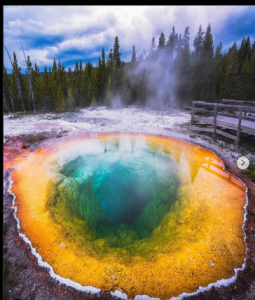
The White House in Washington, D.C. is the official residence and workplace of the President of the United States. It stands as a powerful symbol of the U.S. government and a focal point of American political history.
Historical Significance
The White House was designed by James Hoban and constructed between 1792 and 1800. It has been the residence of every U.S. president since John Adams. The building has witnessed numerous significant events in American history, including presidential inaugurations, major legislative acts, and national crises. It has also been the site of countless diplomatic meetings and state functions.
Architectural Design
The White House features neoclassical architecture, characterized by its symmetrical façade, grand columns, and elegant proportions. The building’s exterior is made of white-painted Aquia Creek sandstone, giving it its distinctive appearance. The structure includes the Executive Residence, the West Wing, the East Wing, and the Eisenhower Executive Office Building, which houses additional offices and staff.
- The Executive Residence: This is the central part of the White House and serves as the main living quarters for the president and the First Family. It includes the famous Oval Office, the Roosevelt Room, and the Lincoln Bedroom, among other rooms.
- The West Wing: This wing is the hub of presidential operations, containing the Oval Office, the Situation Room, and various offices for the president’s senior staff and advisors.
- The East Wing: Primarily used for social events and public tours, the East Wing also houses the First Lady’s offices and the White House Social Office.
- The Eisenhower Executive Office Building: Located adjacent to the White House, this building houses additional offices for the executive branch and provides space for various staff and operations.
Cultural and Political Hub
The White House is not only a residence but also a significant political and cultural venue. It hosts state dinners, receptions, and ceremonial events, making it a central location for diplomatic and social gatherings. The White House also serves as a backdrop for major public announcements and presidential addresses.
Public Access and Tours
While the White House is a private residence, it is open to the public for tours, which are arranged through the office of a member of Congress. The tours offer visitors a glimpse into the historic rooms, artwork, and furnishings that reflect the rich history of the executive mansion.
Preservation and Renovations
Over the years, the White House has undergone several renovations and restorations to preserve its historical integrity and adapt to modern needs. Notable renovations include the rebuilding of the White House after it was burned by British forces during the War of 1812, and various updates to accommodate technological advancements and changing requirements of the presidency.
Symbolic Importance
As the official residence and workplace of the president, the White House embodies the principles of American democracy and leadership. It stands as a symbol of the U.S. government’s continuity, strength, and resilience. Its iconic image is recognized worldwide, representing the nation’s values and aspirations.
The White House continues to be a focal point of American political life and a historic landmark, reflecting the evolving nature of the presidency and the ongoing story of the United States.
7. Empire State Building, New York City

The Empire State Building in New York City is one of the most iconic skyscrapers in the world, celebrated for its striking Art Deco design and breathtaking panoramic views. Completed in 1931 during the Great Depression, it stands as a testament to American engineering and architectural achievement.
Architectural Significance
Designed by the architectural firm Shreve, Lamb & Harmon, the Empire State Building is a prime example of Art Deco architecture. The building reaches a height of 1,454 feet (including its antenna), making it a prominent feature of the New York City skyline. The building’s design includes a distinctive tiered crown that tapers as it ascends, culminating in a spire that enhances its vertical presence.
The building’s exterior is clad in limestone and aluminum, contributing to its sleek and modern appearance. Its intricate detailing and geometric patterns reflect the Art Deco style, which emphasizes bold, streamlined forms and decorative elements.
Observation Decks and Views
The Empire State Building offers two main observation decks:
- The 86th Floor Observation Deck: Located on the 86th floor, this deck provides 360-degree views of New York City and its surroundings. It is a popular destination for tourists and locals alike, offering views that extend up to 80 miles on clear days. Visitors can experience the city from an open-air deck, which provides an unparalleled perspective of landmarks such as Central Park, the Statue of Liberty, and the Brooklyn Bridge.
- The 102nd Floor Observation Deck: For a more elevated experience, the 102nd-floor observation deck offers a more enclosed viewing area with even more panoramic views. This deck provides a unique vantage point, allowing visitors to look out over the sprawling cityscape from an altitude of 1,250 feet.
Historical and Cultural Impact
Since its completion, the Empire State Building has become a symbol of New York City and American resilience. Its construction was completed in record time, taking just over a year, and it was the tallest building in the world until the completion of the North Tower of the World Trade Center in 1970.
The Empire State Building has also appeared in numerous films and media, most famously in the classic film “King Kong,” where the giant ape scales the building. Its silhouette is instantly recognizable, and it has become an enduring icon of the city.
Lighting and Events
The Empire State Building is known for its dynamic lighting displays, which change to commemorate holidays, significant events, and awareness causes. Its lighting scheme often features colors to celebrate national holidays, support charitable causes, and mark important anniversaries.
Tourism and Accessibility
The Empire State Building is a major tourist attraction, drawing millions of visitors each year. In addition to its observation decks, the building offers interactive exhibits and educational displays about its history and construction. The building’s Art Deco lobby is also a point of interest, showcasing original design elements and historical artifacts.
The building’s central location in Midtown Manhattan makes it easily accessible by various forms of public transportation, including subway and bus services. Its prominence and accessibility contribute to its status as one of the most visited landmarks in New York City.
Ongoing Significance
Today, the Empire State Building continues to be a symbol of innovation and a landmark of architectural excellence. It remains a focal point of New York City’s skyline and a must-visit destination for anyone experiencing the city. Its enduring legacy as a marvel of engineering and design underscores its place as an iconic and beloved structure in the heart of one of the world’s greatest cities.
8. Hollywood Sign, Los Angeles

The Hollywood Sign in Los Angeles is an iconic landark and cultural symbol of the entertainment industry. Perched on the Hollywood Hills, it has become a global emblem of Hollywood and the broader film and television industry.
History and Origin
The Hollywood Sign was originally created in 1923 as an advertisement for a real estate development called “Hollywoodland.” Designed by the Los Angeles Times publisher Harry Chandler and his colleagues, the sign was meant to promote new housing in the area. The original sign consisted of 13 letters, each 30 feet high, and was illuminated by 4,000 light bulbs.
By the late 1930s, the sign’s advertising purpose had faded, and it became associated with the burgeoning film industry. In 1949, the Hollywood Chamber of Commerce took responsibility for maintaining the sign and removed the “land” part, leaving just “Hollywood.”
Design and Structure
The Hollywood Sign is a colossal and recognizable structure made of steel and concrete. Each of the letters stands about 45 feet tall and 35 feet wide. The sign is positioned on a hillside at an elevation of approximately 1,578 feet, providing its prominent visibility across Los Angeles.
The sign’s white letters contrast sharply against the surrounding landscape, making it a striking feature on the city’s skyline. Over the years, the sign has undergone various renovations to address weathering and deterioration, ensuring its preservation as a cultural landmark.
Cultural Significance
The Hollywood Sign is more than just a landmark; it represents the heart of the global entertainment industry. It has become synonymous with Hollywood’s legacy of film and television production and the dream of fame and success associated with the area. The sign has been featured in numerous films, TV shows, and other media, reinforcing its status as a symbol of the entertainment world.
Visitor Experience
There are several ways to view the Hollywood Sign:
- Hiking Trails: The sign is accessible via various hiking trails in Griffith Park, such as the Hollyridge Trail, the Mount Hollywood Trail, and the Griffith Observatory Trail. These trails offer different perspectives and vantage points of the sign and the surrounding cityscape.
- Scenic Overlooks: For a more distant view, several scenic overlooks and viewpoints around Hollywood and Griffith Park provide excellent photo opportunities of the sign. Popular spots include the Griffith Observatory and the Hollywood Bowl Overlook.
- Driving Tours: Although visitors cannot drive directly to the base of the sign, several scenic routes and driving tours in the Hollywood Hills provide impressive views of the landmark.
Conservation and Preservation
The Hollywood Sign’s maintenance and preservation are overseen by the Hollywood Sign Trust, a nonprofit organization dedicated to ensuring its upkeep and protection. The Trust has worked to secure the sign’s status as an iconic symbol while addressing challenges such as vandalism and environmental factors.
Legacy
The Hollywood Sign remains one of the most recognized symbols of the American entertainment industry and a beloved landmark for both locals and tourists. Its presence on the Hollywood Hills continues to inspire and attract visitors from around the world, serving as a constant reminder of the magic and allure of Hollywood.
9. Alcatraz Island, San Francisco
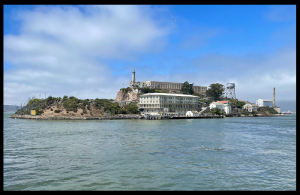
Alcatraz Island, often simply known as “Alcatraz,” is a small island located in San Francisco Bay, approximately 1.5 miles from the city of San Francisco. The island is renowned for its history as a notorious federal prison and its captivating historical and cultural significance. Today, it is a popular tourist destination offering fascinating insights into its past, as well as stunning views of the bay and the city.
Historical Significance
Alcatraz’s history dates back to the mid-19th century when it was first established as a military fortification. The island was initially used to protect San Francisco Bay during the Gold Rush era. In 1934, it was repurposed as a federal prison, known as the “Rock,” and became one of the most secure and infamous prisons in the United States.
The prison housed some of America’s most notorious criminals, including Al Capone, George “Machine Gun” Kelly, and Robert Stroud, the “Birdman of Alcatraz.” The prison was renowned for its harsh conditions and its reputation as inescapable due to the cold, turbulent waters surrounding the island and its high security measures.
Alcatraz operated as a federal penitentiary until 1963, when it was closed due to high maintenance costs and the increasing difficulty of managing its deteriorating infrastructure. After its closure, the island became the site of a notable Native American occupation in 1969, which drew attention to Native American issues and led to a significant political and cultural movement.
Architectural and Structural Features
The Alcatraz prison complex includes several notable structures:
- The Main Prison Building: This is the central structure on the island, featuring a distinctive cell block design with rows of individual cells. The building includes various facilities such as the dining hall, infirmary, and administrative offices.
- The Cellhouse: The cellhouse is the most recognizable part of the prison, with its rows of small, stark cells and the iconic “cage” in the center where inmates were confined.
- The Guard Tower: The island features several guard towers that provided oversight and security for the prison grounds. These towers are still visible today, adding to the historical ambiance of the island.
- The Lighthouse: Alcatraz also has a historic lighthouse that has been in operation since 1854. It is one of the oldest lighthouses on the West Coast and remains an important navigational aid.
Visitor Experience
Today, Alcatraz Island is managed by the National Park Service as part of the Golden Gate National Recreation Area. Visitors can access the island via ferry from Pier 33 in San Francisco. The tour of the island offers a self-guided audio experience that provides detailed accounts of the prison’s history, notable inmates, and the daily life of its residents.
Key experiences include:
- Cellhouse Tour: Explore the cells and common areas of the prison, and hear stories from former inmates and guards through the audio tour.
- Historical Exhibits: The island features various exhibits and displays about its history, including the Native American occupation, prison life, and escape attempts.
- Panoramic Views: Alcatraz offers stunning views of San Francisco Bay, the Golden Gate Bridge, and the city skyline. The island’s elevated position provides unique perspectives and excellent photo opportunities.
- Gardens and Wildlife: The island also features historic gardens and a variety of bird species, adding an element of natural beauty to the historical experience.
Cultural Impact
Alcatraz Island has had a significant cultural impact, appearing in numerous films, books, and documentaries. Its notorious reputation as a high-security prison has contributed to its lasting intrigue and fascination. The island serves as a poignant reminder of the complexities of the American penal system and the broader historical context of its time.
Preservation and Education
The preservation of Alcatraz Island and its structures is a priority for the National Park Service. Efforts are made to maintain and interpret the site’s historical significance while providing educational programs and resources for visitors. The island’s role in history continues to be a subject of study and reflection, making it a valuable destination for learning and exploration.
10. Lincoln Memorial, Washington, D.C
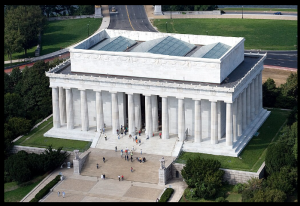
The Lincoln Memorial in Washington, D.C. is a monumental tribute to Abraham Lincoln, the 16th President of the United States. It stands as both a memorial and a symbol of American ideals, celebrating Lincoln’s leadership and contributions to the nation. Located at the western end of the National Mall, the memorial is one of the most iconic and visited landmarks in the United States.
Architectural Design
Designed by architect Henry Bacon, the Lincoln Memorial is inspired by classical Greek architecture, particularly the Parthenon in Athens. The memorial features:
- Columns and Exterior: The structure is a Doric temple with 36 columns, each representing a state in the Union at the time of Lincoln’s death. The columns are made of white Georgia marble, giving the memorial its striking appearance.
- Interior and Sculpture: Inside the memorial is a large seated statue of Abraham Lincoln, created by sculptor Daniel Chester French. The statue is 19 feet tall and is seated on a 10-foot-tall pedestal, symbolizing Lincoln’s towering presence in American history. The statue is flanked by inscriptions of two of Lincoln’s most famous speeches: the Gettysburg Address and his Second Inaugural Address, engraved on the walls of the memorial.
- Reflecting Pool and Surroundings: The Lincoln Memorial overlooks the Reflecting Pool and the Washington Monument, creating a majestic and cohesive visual axis that aligns with the grandeur of the National Mall. The reflection of the memorial in the pool enhances its visual impact and adds to its serene atmosphere.
Historical Significance
The Lincoln Memorial was dedicated on May 30, 1922, and has since become a powerful symbol of unity and freedom. Its construction was driven by a desire to honor Lincoln’s legacy and his role in preserving the Union during the Civil War. The memorial has also played a significant role in American history:
- Civil Rights Movement: The Lincoln Memorial was the site of Martin Luther King Jr.’s famous “I Have a Dream” speech during the March on Washington for Jobs and Freedom in 1963. This event is a pivotal moment in the Civil Rights Movement, and the memorial remains a symbol of the ongoing struggle for racial equality and justice.
- Presidential Addresses and Ceremonies: The memorial has hosted various presidential addresses and ceremonies, including inaugurations and memorial services. Its location and grandeur make it a fitting backdrop for significant national events.
Visitor Experience
Visitors to the Lincoln Memorial can:
- Explore the Memorial: Walk through the memorial’s grand entrance and view the statue of Lincoln, the inscriptions on the walls, and the architectural details. The space is open to the public and accessible at all hours.
- Reflect and Contemplate: The memorial’s tranquil setting and the inspiring presence of Lincoln’s statue offer a place for reflection and contemplation. Visitors often pause to consider the historical significance of Lincoln’s leadership and the ideals he represented.
- Enjoy the Views: From the steps of the memorial, visitors can enjoy panoramic views of the National Mall, including the Washington Monument and the U.S. Capitol. The view is particularly striking at sunrise and sunset.
Cultural Impact
The Lincoln Memorial is not only a tribute to Abraham Lincoln but also a symbol of American democracy and the values of liberty and equality. It is featured prominently in American culture and has appeared in numerous films, photographs, and artworks. The memorial’s design and significance continue to inspire visitors from around the world.
Preservation and Maintenance
Maintaining the Lincoln Memorial involves regular cleaning and preservation efforts to protect the marble surfaces and ensure the structural integrity of the building. The National Park Service oversees the upkeep of the memorial and provides educational programs and tours to enhance visitors’ understanding of its history and significance.
The Lincoln Memorial remains a powerful and enduring symbol of Abraham Lincoln’s legacy, embodying the principles of justice, unity, and freedom that define the American spirit.



